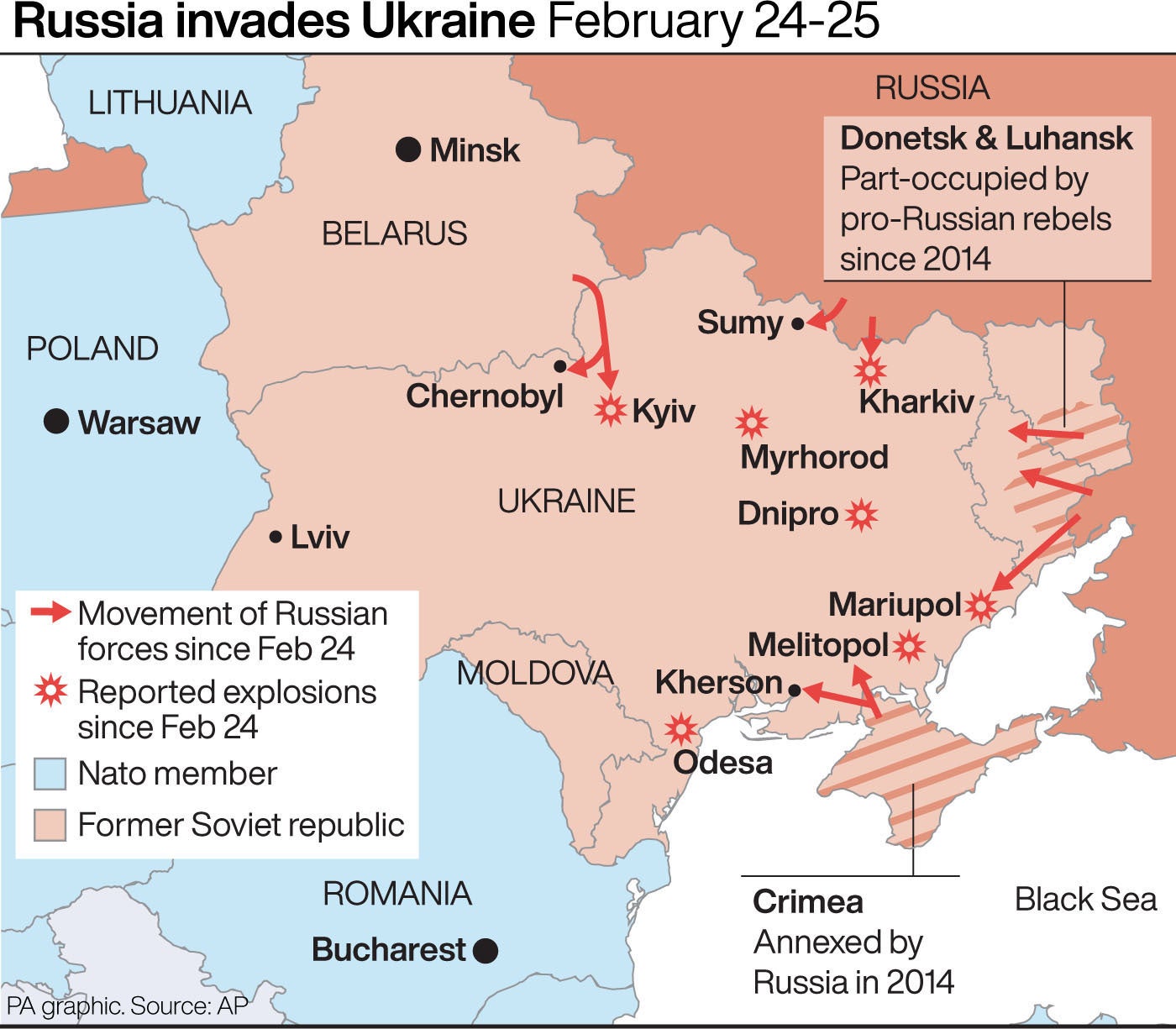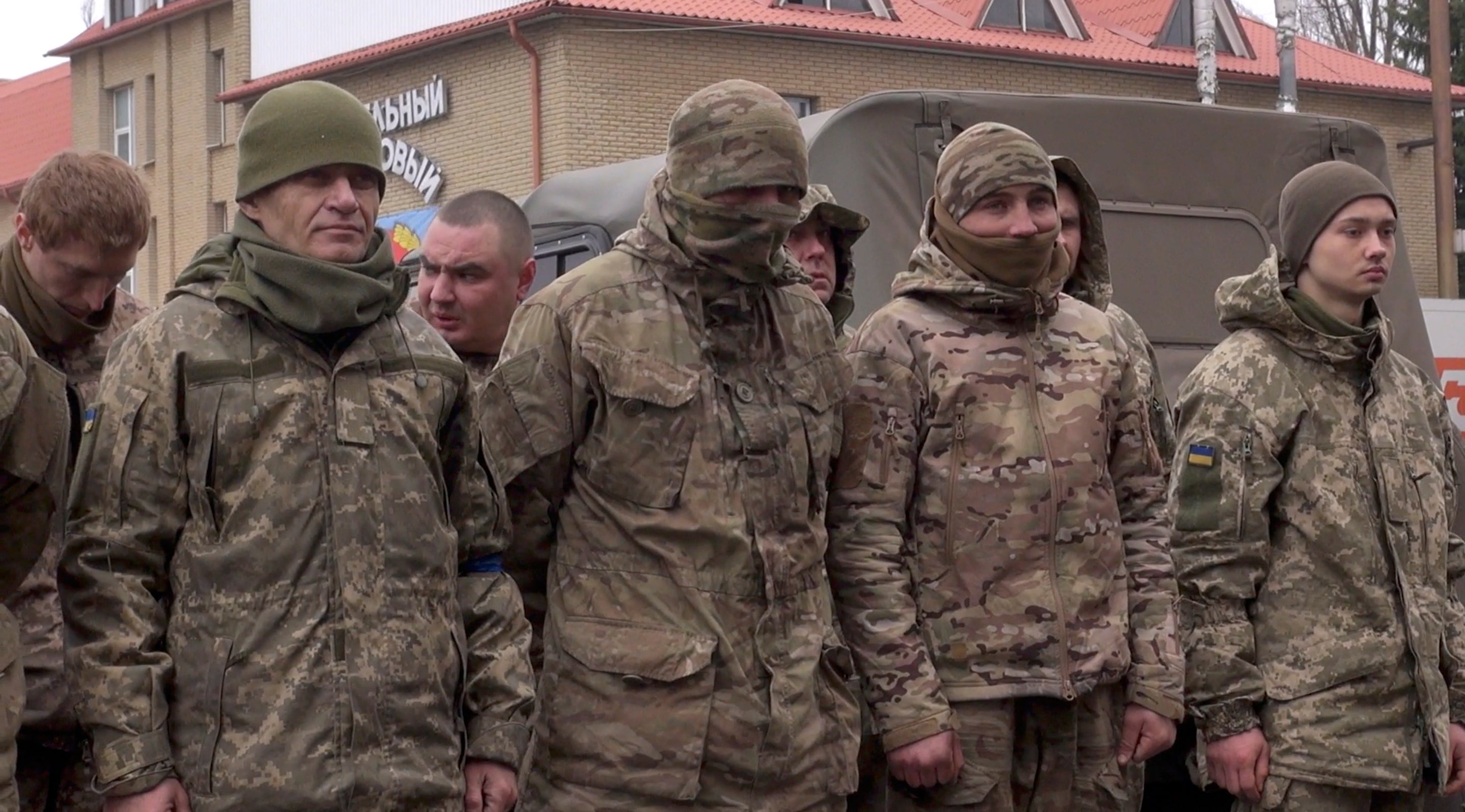Russia moves weapons capable of inflicting mass casualties into position, claim intelligence officials
Exclusive: Officials in the west are anxious that Russia could turn to weapons capable of inflicting heavy casualties, reports Kim Sengupta in Kyiv
Your support helps us to tell the story
From reproductive rights to climate change to Big Tech, The Independent is on the ground when the story is developing. Whether it's investigating the financials of Elon Musk's pro-Trump PAC or producing our latest documentary, 'The A Word', which shines a light on the American women fighting for reproductive rights, we know how important it is to parse out the facts from the messaging.
At such a critical moment in US history, we need reporters on the ground. Your donation allows us to keep sending journalists to speak to both sides of the story.
The Independent is trusted by Americans across the entire political spectrum. And unlike many other quality news outlets, we choose not to lock Americans out of our reporting and analysis with paywalls. We believe quality journalism should be available to everyone, paid for by those who can afford it.
Your support makes all the difference.Russian forces attempting to storm Kyiv and other main cities are being reinforced after meeting fierce resistance with large numbers of troops and heavy weaponry capable of inflicting massive casualties, according to western intelligence analysts.
The Ukrainian capital is said to be the destination for two Russian armies – the 41st Combined Arms Army (CAA) and the 1st Guards Tank Army – as part of an encirclement operation from three sides with a fourth one being considered.
Western officials have expressed deep concern that frustration at a long delay in capturing Kyiv may lead to Vladimir Putin ordering the use of weapons capable of causing huge loss of lives, including thermobaric missiles.
Among the weapons which have been seen to be moving towards the capital and other cities are TOS-1 thermobaric launchers, BM-21 122mm Grad, BM-21 220mm Uragan, and 300mm Smerch systems. All are area denial systems which are not used for precision strikes, but clearing stretches of ground.
In addition, intelligence officials have seen the appearance of the 27M Malka 203mm heavy self-propelled howitzer and 2S4 Tyulpan 240 mm heavy self-propelled mortars which can be used on large buildings.
The 41st CAA and the 1st Guards Tank Army have around 35,000 to 40,000 personnel with support. But smaller numbers are expected to be deployed fully into Ukraine.
The main routes to Kyiv being targeted by the Russian general staff, it is claimed, are from Belarus down to the west bank of the Dnieper river; from the Gomel down to the east back of the Dnieper, west of Chernihiv; and through Kursk, Borzna and Bovary. A fourth option would be the force now fighting in Kharkiv moving up to the east bank of the Dnieper.
Officials say that using the heavy option may take some time and the Russians are likely to persist with the current operational plan of taking Kyiv without inflicting huge numbers of deaths and injuries.

It is widely accepted, however, that Russian forces are behind their schedule in their projected rate of progress. Britain’s defence secretary Ben Wallace’s conclusion that they have failed to reach their military objective in the first few days is widely shared by Ukrainian and other international officials.
The Ukrainian-controlled territories in the Donbas, which President Putin said will be merged into the “Peoples Republics” of Donetsk and Luhansk, are yet to be captured. And, despite intense fighting, none of the main cities targeted by the Russians have fallen.
Russian forces have proved surprisingly vulnerable to air strikes despite having overwhelming superiority in the number and quality of warplanes and in missiles and cannons. The Ukrainians have been highly effective in the use of Turkish Bayraktar TB2 drones they have been acquiring, and have already used successfully against separatist forces in the Donbas. The state-backed Russian channel Sputnik highlighted the use of the drones, but claimed that most of them have been shot down.
There has also been surprise at weakness in the Russian communications and coordination systems. There are stories of lost Russian columns asking for directions to Kyiv. These may be exaggerated, but some American units also asked for directions to Baghdad during the 2003 invasion. In any event, Ukrainian authorities are removing road signs on the approaches to Kyiv in an attempt to disorientate the Russians.

The Ukrainian Defence Ministry claimed on Saturday that it had shot down a Russian transporter plane carrying soldiers. It said that a Ukrainian SU-27 fighter jet intercepted the Russian IL-76 MD aircraft as it was trying to land paratroopers in the Kyiv region. The IL-76 MD can carry up to almost 170 soldiers, as well as a crew of seven.
Ukrainian officials claim that over 3,500 Russian troops have been killed since the invasion began. Russia’s military spokesperson Major General Igor Konashenkov held that Moscow had suffered no casualties during the invasion.
Ukraine’s health minister Viktor Liashko stated that 198 Ukrainians have been killed in that time, and 1,115 people injured, including 33 children. The figures were not broken down between combatants and civilians. On Friday the president’s office stated that 40 soldiers have been killed.

After intense missile strikes, artillery barrages and gunfights in the outskirts of Kyiv during the night, Saturday was relatively quiet in the city. President Zelensky, who had turned down Joe Biden’s offer to fly him and his family to safety, declared that the Russians have sent “missiles, fighters, drones, artillery, armoured vehicles, saboteurs and airborne forces” against Ukraine, but “we are defending the country, the land of our future children.
“Kyiv and key cities around the capital are controlled by our army. The occupiers wanted to block the centre of our state and put their puppets here, as in Donetsk. We broke their plan."
Mr Zelensky also once again stated that the civilian population in Kyiv would be armed. On Saturday the Interior Ministry announced that “18,000 machine guns” will be handed to volunteers.
A curfew in the capital was extended from 10pm-8am to 5pm-8am by the mayor, Vitali Klitschko, who declared that violators would be considered “the enemy”. Armed groups of civilians have been setting up checkpoints in the streets during the course of the day, at times “arresting” suspects: another volatile mix in the combustible state of affairs in Ukraine.




Join our commenting forum
Join thought-provoking conversations, follow other Independent readers and see their replies
Comments